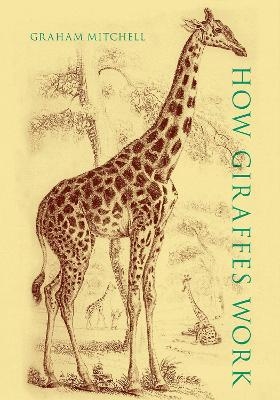
How Giraffes Work
Oxford University Press Inc (Verlag)
978-0-19-757119-4 (ISBN)
There are few creatures more beautiful, aloof, and fascinating than giraffes. Their social and ecological impact has been documented by many researchers. However, the inner workings of extant giraffes are less well known. That is why Graham Mitchell decided to write How Giraffes Work: a comprehensive overview of the anatomy, physiology, and biochemistry--in short, the normal functions--of a free-living, wild animal in its natural environment.
A zoologist, veterinarian, and physiologist, Mitchell explains how giraffes get through their day. Additionally, he takes readers through the evolution of their physical characteristics, such as their size, shape, and coat markings. His approach integrates history with the physiology, anatomy, biochemistry, behavior, evolution, genetics, ecology, climate science, and more.
Each chapter follows the discovery and utility of a different characteristic of giraffes. Illustrated with over two hundred figures and diagrams, the book explains how giraffes might have evolved and survived over many millions of years as well as how our perception of them has changed throughout history.
So, how do giraffes work? The answers lie in a story filled not only with the details of their internal working but also with the labors of the extraordinary scientists who have put so many pieces of this puzzle together.
Graham Mitchell is Emeritus Professor of Zoology and Physiology at the University of Wyoming and of Physiology at the University of the Witwatersrand in South Africa. He has been studying the physiology of free-living species and teaching physiology and biochemistry to medical, veterinary, and science students for over 40 years.
Preface
Chapter 1: What's in a Name?
Chapter 2: Some Firsts
Chapter 3: The Scientific Age
Chapter 4: The Antecedents
Chapter 5: Notes on Allometry and Prediction of Body Mass and Age of Giraffes
Chapter 6: Antitypes, Ancestors, and the Origin of Modern Giraffes
Chapter 7: The World of Browsers
Chapter 8: The Machinery of Digestion
Chapter 9: The Blood Pressure of Giraffes
Chapter 10: Edema, Fainting, and Strokes
Chapter 11: Water Balance in Giraffes
Chapter 12: Respiration
Chapter 13: Exercise in Giraffes
Chapter 14: Keeping Cool
Chapter 15: The Skeleton of Giraffes
Chapter 16: Muscles, Nerves, and Skin
Chapter 17: Reproduction and the Fetus
Chapter 18: A Shape to Die For?
Alphabetical References
Giraffe-Specific References in Chronological Order
Index
| Erscheinungsdatum | 07.07.2021 |
|---|---|
| Zusatzinfo | 213 figures and a 16-page full-color insert |
| Verlagsort | New York |
| Sprache | englisch |
| Maße | 260 x 185 mm |
| Gewicht | 1275 g |
| Themenwelt | Naturwissenschaften ► Biologie ► Evolution |
| Naturwissenschaften ► Biologie ► Ökologie / Naturschutz | |
| Naturwissenschaften ► Biologie ► Zoologie | |
| ISBN-10 | 0-19-757119-0 / 0197571190 |
| ISBN-13 | 978-0-19-757119-4 / 9780197571194 |
| Zustand | Neuware |
| Haben Sie eine Frage zum Produkt? |
aus dem Bereich


